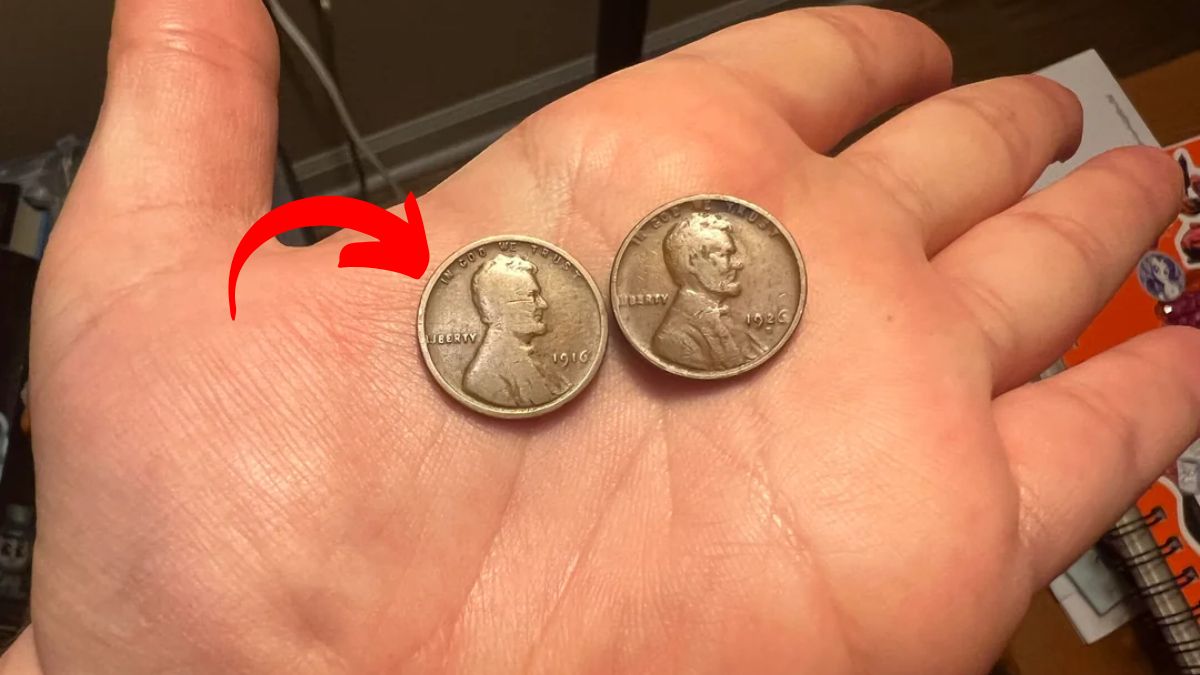Coins often hold more than just monetary value; some become legendary collectibles, like the Lincoln Wheat Penny. Once a common coin in American currency, it has now achieved fame, with a rare 1943 copper version valued at a staggering $145 million. This article explores the story of this iconic penny, its historical significance, and what makes it so valuable.
What Is the Lincoln Wheat Penny?
The Lincoln Wheat Penny was introduced in 1909 to honor the 100th anniversary of President Abraham Lincoln’s birth. Designed by artist Victor David Brenner, it was the first U.S. coin to feature a president’s portrait.
On the obverse (front), it displays a profile of Lincoln, while the reverse (back) features two wheat stalks encircling the words “ONE CENT.” This unique design, representing growth and prosperity, gave the coin its nickname, “Wheat Penny.” These pennies were minted until 1958, after which they were replaced by the Lincoln Memorial design.
Why Is the Lincoln Wheat Penny So Valuable?
While most Lincoln Wheat Pennies are worth only a few cents, some rare versions have become exceptionally valuable due to their rarity, historical significance, and collector demand.
The most famous example is the 1943 copper Wheat Penny. During World War II, the U.S. Mint replaced copper with steel for penny production to conserve resources. However, a small number of copper pennies were accidentally struck that year, making them one of the rarest coins in U.S. history.
The 1943 Copper Penny: A Collector’s Dream
The 1943 copper Wheat Penny is the star of the collection, valued at $145 million. Its rarity stems from a production error where copper planchets (blanks) were mistakenly used instead of steel.
This penny was first discovered in 1947 by a Pennsylvania coin dealer, and its value has since skyrocketed. Only a handful of these coins are known to exist, making it a coveted treasure among collectors.
What Makes the 1943 Copper Penny So Special?
The 1943 copper penny stands out for several reasons:
- Rarity: The accidental use of copper during wartime shortages resulted in a limited number of these coins.
- Historical Significance: It represents a unique period in U.S. history when resources were redirected for the war effort.
- Collector Demand: Its fame and scarcity have made it one of the most sought-after coins in the world.
In auctions, this penny has fetched astronomical prices, including the record-breaking $145 million.
How to Identify a 1943 Copper Penny
If you think you might have a 1943 copper penny, here’s how to identify it:
- Date and Mint Mark: Check for the 1943 date and a “D” or “S” mintmark, or no mintmark for those struck in Philadelphia.
- Weight: Copper pennies weigh about 3.1 grams, while steel pennies weigh around 2.7 grams.
- Color: Copper pennies have a reddish-brown hue, while steel pennies appear silvery.
It’s crucial to have any suspected rare coins authenticated by a professional, as counterfeits and altered coins are common.
Other Rare Lincoln Wheat Pennies
While the 1943 copper penny is the most famous, other rare varieties also hold significant value:
- 1909-S VDB Penny: Features the initials of the designer, Victor David Brenner, and has a low mintage, making it highly collectible.
- 1922 No D Penny: Struck without the “D” mintmark, this error coin is rare and valuable.
- 1955 Double Die Penny: Displays a noticeable doubling of the date and inscriptions, caused by a minting error.
Why Are Lincoln Wheat Pennies Still in Circulation?
Despite their rarity, Lincoln Wheat Pennies occasionally turn up in circulation. Many people are unaware of their value, and these coins may end up in jars of loose change or as part of old collections.
This continued circulation keeps the thrill of discovery alive, as collectors and enthusiasts comb through coins in search of hidden treasures.
The Role of Collectors in the Coin Market
The coin market has grown significantly, with rare pieces like the 1943 copper penny attracting global attention. Collectors and numismatists (coin experts) are passionate about finding and preserving historical coins.
For collectors, the joy of discovering a rare coin often outweighs the monetary reward. Auctions and online marketplaces provide opportunities to buy, sell, and trade coins, making the hobby accessible to both beginners and seasoned enthusiasts.
Conclusion: A Small Coin with Big Value
The Lincoln Wheat Penny is more than just a piece of currency—it’s a link to history and a testament to the value of rarity and craftsmanship. While most Wheat Pennies are ordinary, the occasional discovery of a rare variety, like the 1943 copper penny, adds excitement to the world of coin collecting.
Whether you’re an experienced numismatist or a curious beginner, the hunt for rare coins can be a rewarding journey. Who knows? Your next handful of change might hold a $145 million treasure waiting to be discovered!
Disclaimer: The information provided in this article is for educational purposes only. Coin values may vary, and any claims of rarity or worth should be verified by a professional numismatist.






